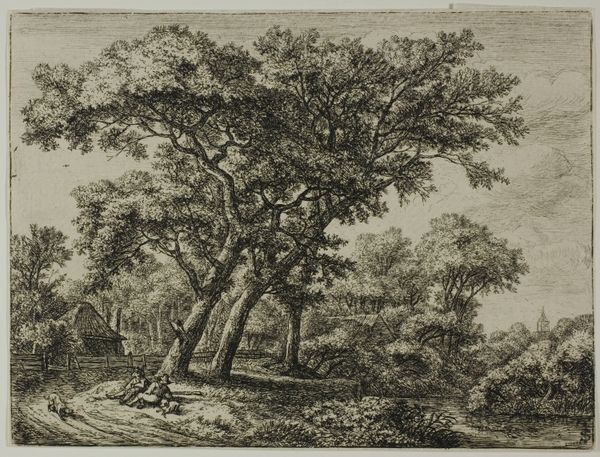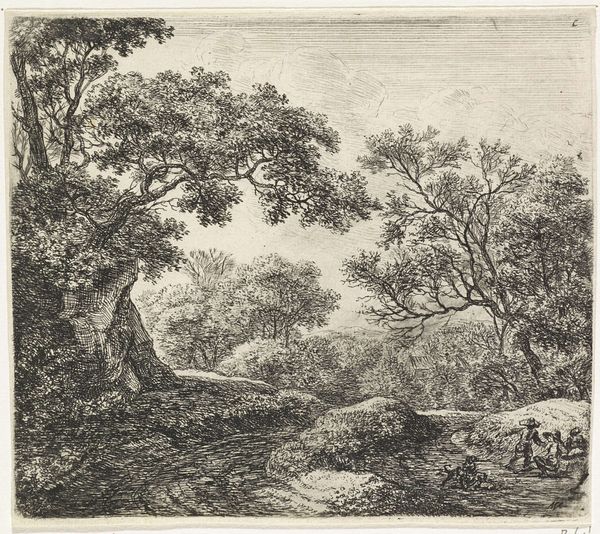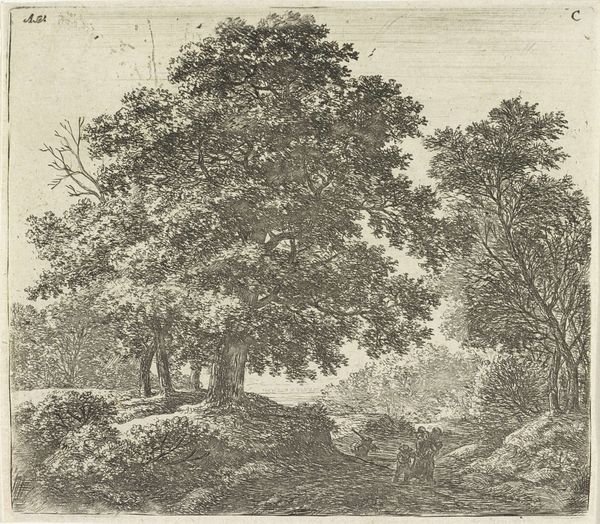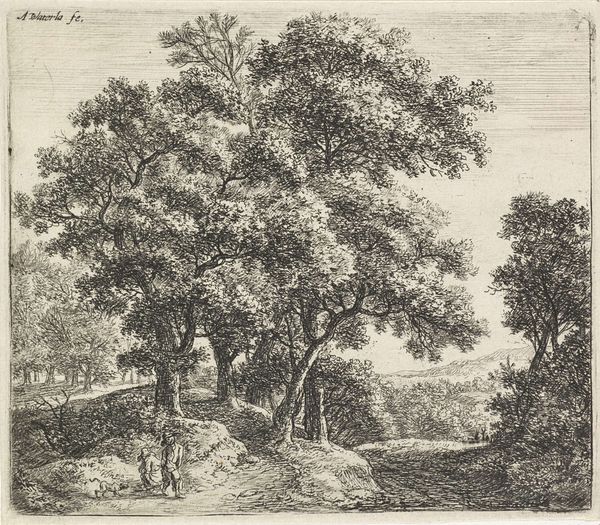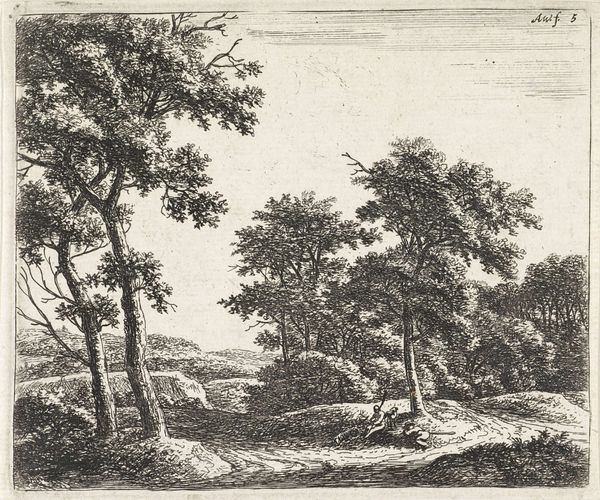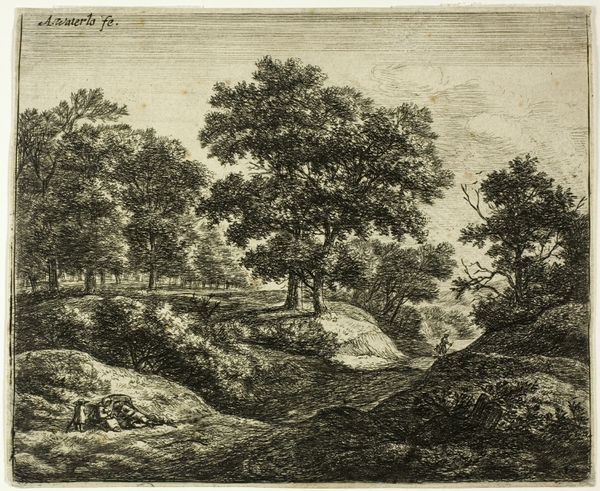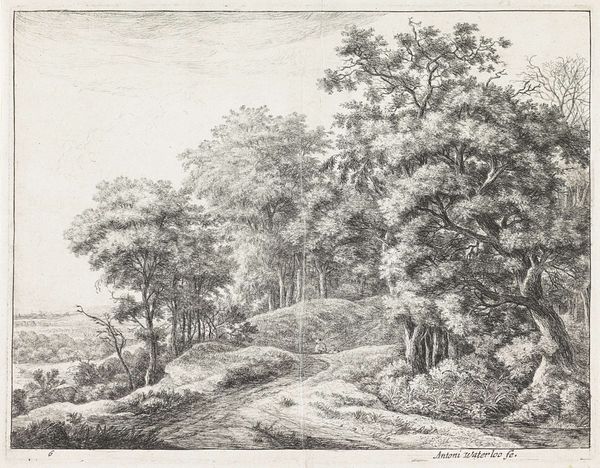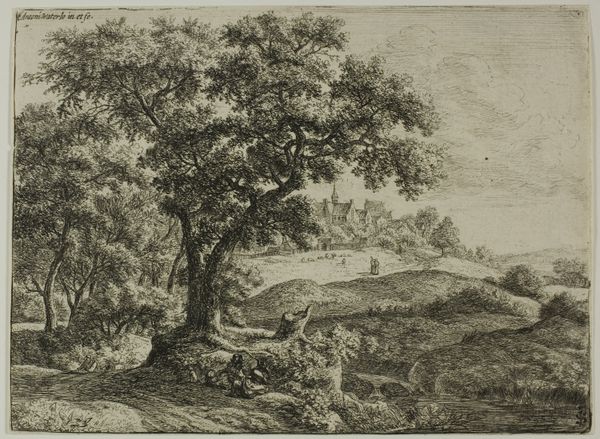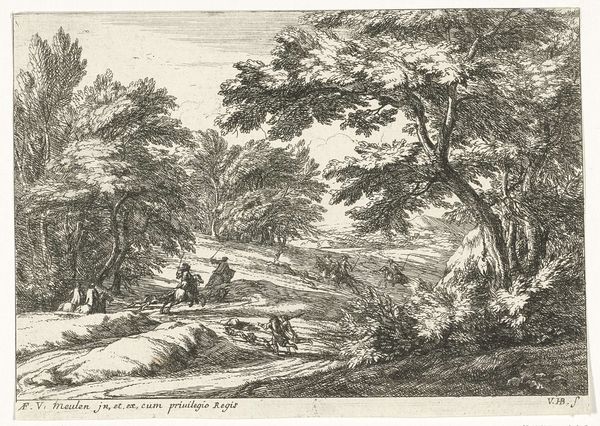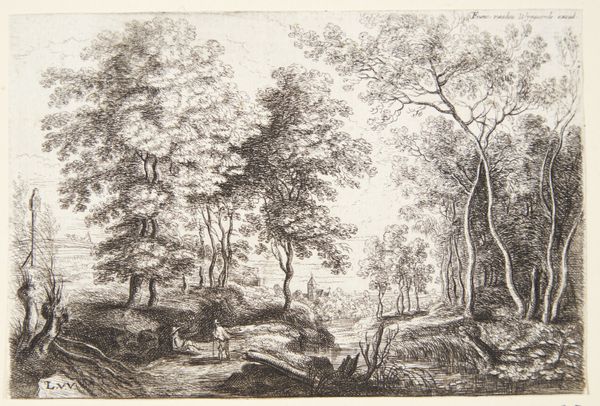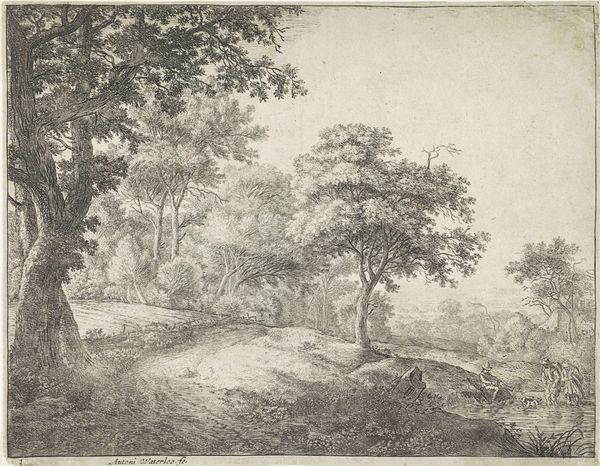
drawing, print, etching, paper
#
drawing
#
dutch-golden-age
# print
#
etching
#
landscape
#
paper
#
line
#
realism
Dimensions: 138 × 175 mm (image); 138 × 176 mm (plate); 142 × 180 mm (sheet)
Copyright: Public Domain
This is "The Group of Four Trees," an etching made by Anthonie Waterloo in the 17th century. Etching is an indirect process, requiring the artist to prepare a metal plate, cover it with wax, and then draw through the wax to expose the metal. The plate is then submerged in acid, which bites into the exposed lines. This gives the print a unique character, with a fine, almost scratchy quality. Waterloo was a specialist in landscape, and here the etched line really shines, capturing the textures of bark, leaves, and the play of light. Look closely, and you’ll notice the remarkable intricacy of the composition. Waterloo's skill would have been highly prized in his time, and prints like this were widely collected, demonstrating the demand for finely crafted images that could be reproduced and disseminated. What might seem like a simple rendering of nature is, in fact, a testament to the artist’s labor and the sophisticated techniques of printmaking. It invites us to appreciate the craft behind the image.
Comments
No comments
Be the first to comment and join the conversation on the ultimate creative platform.
